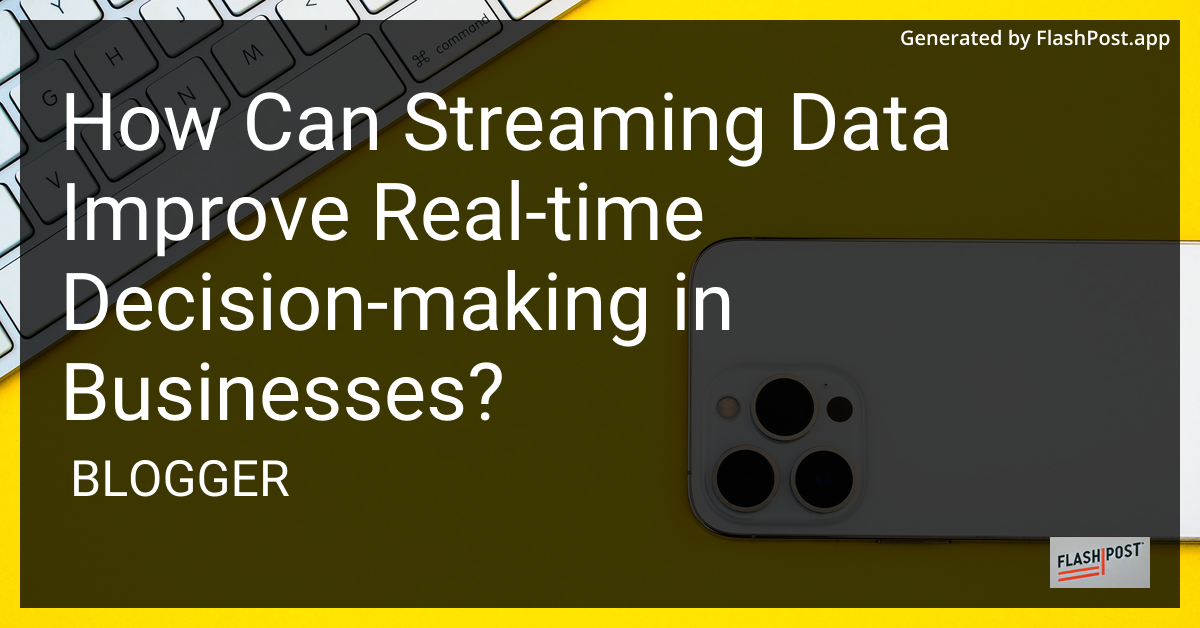How Can Streaming Data Improve Real-time Decision-making in Businesses?

How Can Streaming Data Improve Real-Time Decision-Making in Businesses?
In today’s fast-paced digital environment, businesses are constantly searching for ways to enhance their decision-making processes. One of the most effective strategies is leveraging streaming data to make real-time decisions. This approach allows businesses to process large volumes of data instantaneously, enabling them to respond promptly to emerging trends and situations. In this article, we’ll explore how streaming data can significantly improve real-time decision-making in businesses.
Understanding Streaming Data
Streaming data refers to the continuous flow of data generated from various sources in real time. This data can be collected from multiple channels such as social media, websites, IoT devices, and more. When businesses utilize streaming data effectively, they can gain a competitive edge by acting on insights as they occur rather than relying on historical data.
Benefits of Streaming Data for Business Decision-Making
Enhanced Responsiveness: With streaming data, businesses can improve their responsiveness to changing market conditions. This allows for prompt adjustments in operational strategies, leading to better customer satisfaction and operational efficiency.
Improved Accuracy: Real-time data provides up-to-date and accurate information, reducing the risk of making decisions based on outdated data. For example, financial institutions can use real-time data to adjust trading algorithms based on current market conditions.
Predictive Analytics: Businesses can apply predictive analytics to streaming data, enabling them to anticipate future trends and behaviors. This can be particularly useful in supply chain management, where demand forecasting can prevent stockouts or overstock situations.
Operational Efficiency: By processing streaming data, businesses can automate decision-making processes, reducing the need for human intervention and thus minimizing errors. This results in streamlined operations and cost savings.
Implementing Streaming Data Technologies
To harness the power of streaming data, businesses can adopt various technologies and frameworks, such as Apache Kafka, Amazon Kinesis, and Hadoop. These tools facilitate the collection, processing, and analysis of real-time data streams, enabling efficient data management and decision support systems.
To understand how to integrate streaming data technologies with existing systems, you might want to explore how to read multiple text files in MATLAB. Additionally, integrating with a data processing framework like Hadoop can enhance data handling capabilities.
Challenges and Considerations
While streaming data offers substantial benefits, it’s crucial to address challenges such as data security, privacy, and the need for robust infrastructure. Businesses must also ensure their teams possess the necessary skills to handle and analyze real-time data effectively.
For instance, managing data in MATLAB requires techniques like how to save streaming data to MATLAB mat file. Understanding how to convert string array to nan in MATLAB or visualize a vector rotating in 3D in MATLAB can enhance data analysis efforts.
Conclusion
Incorporating streaming data into business processes can significantly improve real-time decision-making capabilities. By leveraging the latest technologies and frameworks, businesses can harness real-time insights to drive growth, efficiency, and innovation. As businesses continue to navigate the complexities of the digital era, the effective use of streaming data will become an indispensable tool for maintaining a competitive edge.
Comments
Post a Comment